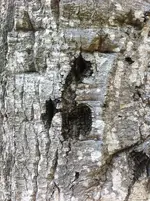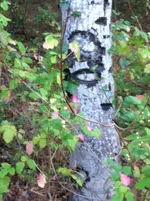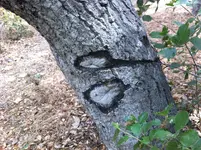Hi fronjm05. I found this from Stilldign. consider it a WAG. It may be something for you to work with
[TD="class: th post-subject"][h=3]The "Keyhole" Symbol[/h][/TD]
[TD="class: th post-number"]Lead[/TD]
[TD="class: th toggle lastcol"] [-] [/TD]
[TD="class: firstcol poster-detail"]

[/TD]
[TD="class: post-content lastcol, colspan: 3"]
Tags :
None
The "keyhole" symbol is one of those symbols that "falls into place" as your experience grows. This symbol is found at most, if not all, "John" sites, as well as other sites using other coding techniques.
The keyhole, when found on a rock map or carved on ANY surface (panel) etc, is telling you a little story. This story relates to you the fact that you are going to be locating a pozo that has been sealed with a tombstone (a cap rock).
The very top part of the keyhole symbol is a circle. This circle represents the hole that you are going to be digging in order to locate this cap rock. Once you have dug down to this cap rock you will quickly find that you have one major problem; how to get the cap rock off of the opening (this rock is corked into the opening).
This brings us to the bottom portion of the keyhole symbol, which I prefer to call the "dove tail." You see, in order to get your pry bars under the cap rock, you need to "dove tail" the hole that you have dug. This dove tailed area will now allow you to slip your bars in and under the cap rock, allowing for easy removal.
The cap rock (pozo) is usually found at step number 13, however, at step number 12 you will dig up a rock that resembles the keyhole. Pay attention to this rock at step number 12, as it will tell you which direction to dig your dove tail when you reach step number 13.
There is a lot more to this symbol, but the main thing to remember is that when you find the "keyhole" symbol, you know that you are being led to a pozo, and that in order to properly remove the cap rock, you have to dove tail the hole in order to allow for pry bars to be effective. Again, this dove tailed area has already been established, so pay attention to your rock map found at the 12th step so that you can expose this area and make use of it when removing the cap rock.
Other signs familiar to "John" sites;
1) 757..........these numbers are asking you "have you been lied to (75)" about the seventh step. It is very common to make the 6th and 7th step confusing to you. In fact, if you can't nail down the 7th step, you will be wasting time.
2) The Duck. I have written a little about this symbol, and will release more in the future.
3) The Eagle. Of course the eagle is used!! We're talking about John sites and the eagle represents John.
4) The Owl.
5) The Bell.
In the near future I will be releasing more information about these John sites, and why the triangle found at these sites is worthless (as a triangle). Many of you have located these triangles and have been spinning your wheels trying to locate the covered opening. When fully understood, these John sites give you information to at least two openings (pozo and main), as well as give you rock maps (at strategic locations) that lead to the mines that are located within the area.
These rocks maps that are found at some of the 13 different steps are the most clear (uncoded) maps that you can find and they show exactly where the covered mine openings are located.
[/TD]
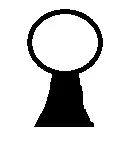




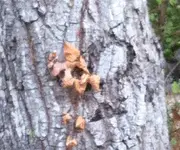
 or maybe a bird... are those other ones just natural marks or maybe some eyes... looks like carvings around a knot. There is another similar eye looking one with a line coming out of it, so maybe they are pointing...
or maybe a bird... are those other ones just natural marks or maybe some eyes... looks like carvings around a knot. There is another similar eye looking one with a line coming out of it, so maybe they are pointing...